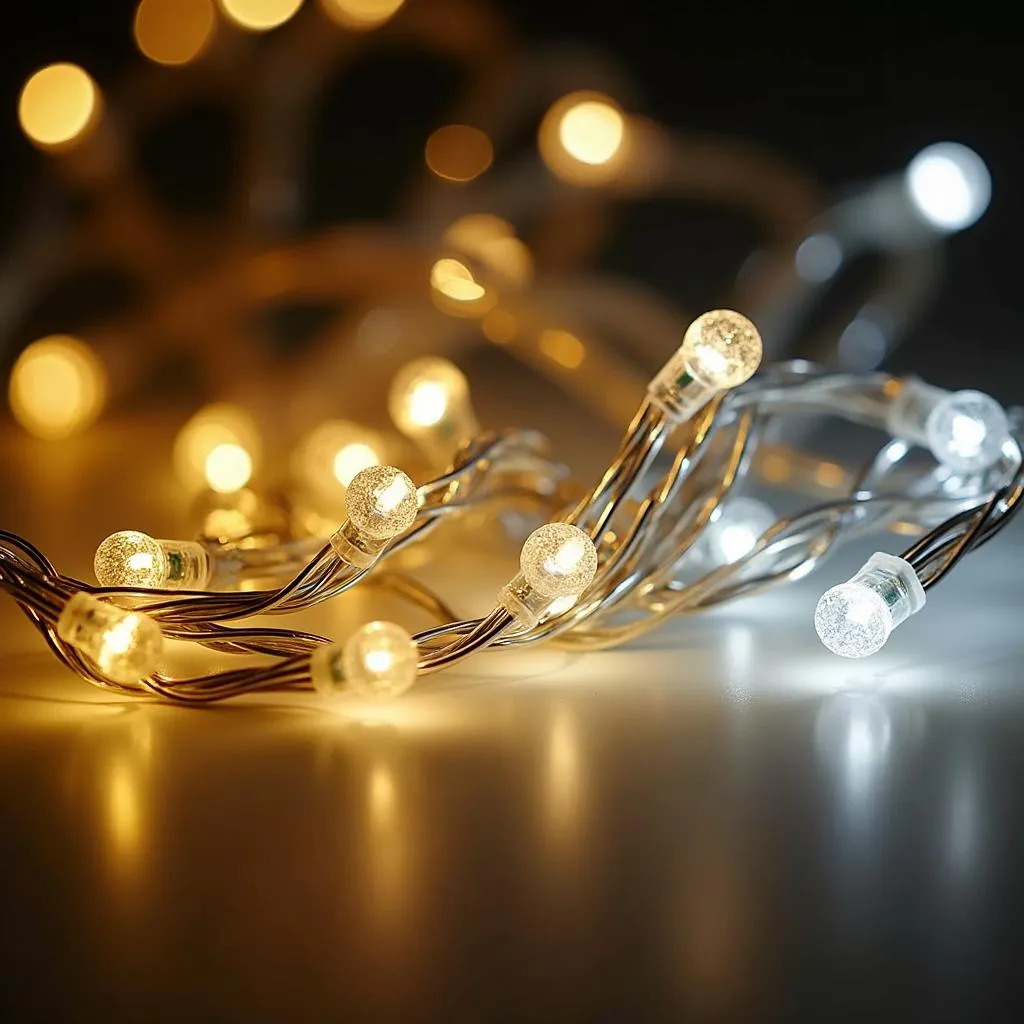You’ve carefully selected your Christmas decorations, from the perfect tree topper to the ornaments that hold cherished memories. Now comes the age-old question: can you mix white and colored Christmas lights? The short answer is yes! But achieving a cohesive and visually pleasing look requires a bit more thought. Let’s dive into the world of Christmas lighting and explore how to masterfully blend white and colored lights for a festive display that dazzles.
Balancing Warmth and Whimsy: Choosing the Right White
Not all white lights are created equal. Understanding the different shades of white is crucial for creating the desired ambiance.
- Warm White: Emitting a yellow or golden hue, warm white lights evoke a cozy and traditional atmosphere, reminiscent of candlelight. They pair beautifully with warm-toned colored lights, like red, orange, and yellow, for a classic Christmas feel.
- Cool White: These lights offer a crisp, bluish-white light that creates a more modern and vibrant feel. They complement cool-toned colored lights, such as blue, green, and purple, for a contemporary and icy aesthetic.
- Pure White: Also known as daylight white, this option provides a clean, neutral white light. Its versatility allows it to harmonize with both warm and cool-toned colored lights, making it a safe bet for any Christmas light scheme.
 Christmas lights in warm white, cool white, and pure white.
Christmas lights in warm white, cool white, and pure white.
Creating Harmony: Strategies for Mixing Lights
Once you’ve chosen your white light base, it’s time to infuse your Christmas decor with pops of color. Here are some strategies for a visually appealing blend:
1. The 70/30 Rule: A timeless design principle, the 70/30 rule encourages using 70% of one element and 30% of another for a balanced and harmonious look. When mixing Christmas lights, designate 70% as your dominant white light and 30% as your accent color.
2. Color Coordination: Consider your existing Christmas decor and the overall color scheme of your home. If your ornaments feature warm tones, opt for warm-colored lights to complement them. Conversely, if your decorations lean towards cooler hues, choose cool-toned colored lights.
 Christmas tree adorned with warm white lights and red ornaments.
Christmas tree adorned with warm white lights and red ornaments.
3. Strategic Placement: The way you arrange your lights can significantly impact the overall effect. Try wrapping your white lights around the main body of your Christmas tree and using colored lights to highlight specific branches or ornaments. You can also alternate between white and colored light strands on your banister or around doorways for a playful touch.
4. Less is More: When it comes to mixing white and colored Christmas lights, restraint is key. Avoid using too many different colors, as this can create a chaotic and overwhelming display. Instead, focus on two or three colors that complement each other and your overall Christmas theme.
Expert Insights:
“Remember, Christmas lighting is about creating a mood and reflecting your personal style,” says renowned interior designer, Emily Carter. “Don’t be afraid to experiment with different combinations of white and colored lights to find what sparks joy for you and your family.”
 Outdoor Christmas decorations with white and blue lights.
Outdoor Christmas decorations with white and blue lights.
Conclusion
Mixing white and colored Christmas lights offers endless possibilities for creating a unique and festive ambiance. By considering the different shades of white, employing design principles like the 70/30 rule, and strategically placing your lights, you can achieve a stunning and cohesive Christmas display that reflects your personal style and fills your home with holiday cheer.
FAQs
1. Can I mix LED and incandescent Christmas lights?
While you can technically mix LED and incandescent lights, it’s generally not recommended. LED lights are more energy-efficient and have a longer lifespan, while incandescent lights tend to emit more heat and have a shorter lifespan.
2. How many strings of lights do I need for my Christmas tree?
A good rule of thumb is to use about 100 mini lights or 50 larger C7 or C9 bulbs per foot of tree height.
3. Can I use white lights outdoors and colored lights indoors?
Absolutely! You can choose different lighting schemes for your indoor and outdoor spaces to create distinct moods and highlight different areas.
4. Where can I buy high-quality Christmas lights?
Many retailers, both online and in-store, sell a wide variety of Christmas lights. Look for reputable brands that offer warranties and energy-efficient options.
5. What are some creative ways to use Christmas lights beyond the tree?
Get creative! Use lights to accentuate architectural details, create a festive tablescape, or add a touch of magic to your fireplace mantel.
Need More Help?
For personalized advice on choosing the perfect Christmas lights or assistance with your festive decorations, contact us at 0373298888, email us at [email protected], or visit our showroom at 86 Cầu Giấy, Hà Nội. Our team of Christmas lighting experts is available 24/7 to answer your questions and help you create a dazzling holiday display.

